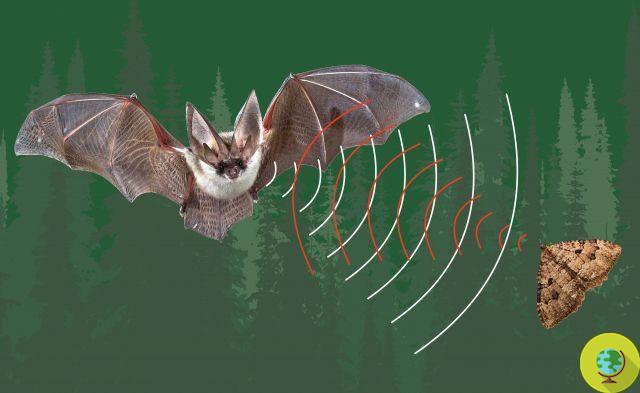
A Danish study allegedly proved that bats and whales use the same 'tools' to hunt
He is about to end up run over, his mother saves himWhales e bats, what do they have in common? Apparently nothing, at first glance. Water and sky are their habitats. But a team of Danish researchers has found that what unites these two animal species is the way of hunting. Their acoustic behavior when hunting is eerily similar.
Although they have evolved separately over millions of years and in different worlds, the bats and odontocetes, including also Dolphins, sperm whales and killer whales behave in the same way to identify and capture prey with eco-localization, thebiological equivalent of sonar.
The findings were made possible by a new type of whale study that allowed scientists, for the first time, to track their feeding behavior in the wild. And all thanks to a new device called DTAG, developed by Mark Johnson, an electrical engineer of the Woods Hole Oceanographic Institution who attaches himself to the whale's skin through a suction cup, recording its ultrasonic frequencies.
The researchers presented the results of the study at the meeting Acoustic 2012 held in Hong Kong from 13 to 18 May, a joint meeting of the Acoustical Society of America (ASA), the Acoustical Society of China, the Western Pacific Conference Acoustics and the Hong Kong Institute of Acoustics.
According to experts, bats and whales had many opportunities to evolve their echolocation techniques, but they did not differ because their ancestors were unable to apply them to hunting. However, it has long been established that both bats and whales use the same ultrasonic frequency range, between 15 and 200 kilohertz, to hunt their prey. To give an idea, the human ones are between 20 hertz and 20 kilohertz.
This overlapping of animal frequencies is even more surprising because sound travels about five times faster in water than in air, giving whales an order of magnitude greater than bats to intercept a potential meal.
Now, thanks to new technology that records what a whale feels and how it moves in nature, Peter Madsen Teglberg of the University of Aarhus in Denmark and Annemarie Surlykke of the University of Southern Denmark discovered similarities in the acoustic tactics of animals.
“Until now - he explains Madsen - it was not known how a whale would coordinate its acoustic behavior in nature to intercept its prey “. Thanks to the new system, experts will be able to monitor the feeding behavior of whales in more detail, evaluating any changes caused by climate change.
Francesca Mancuso


























